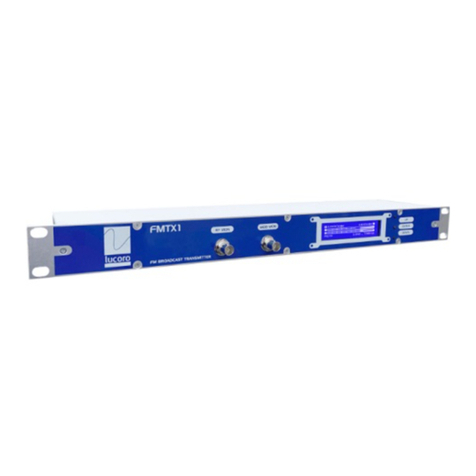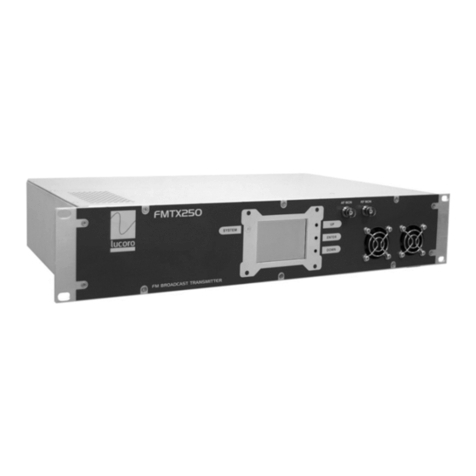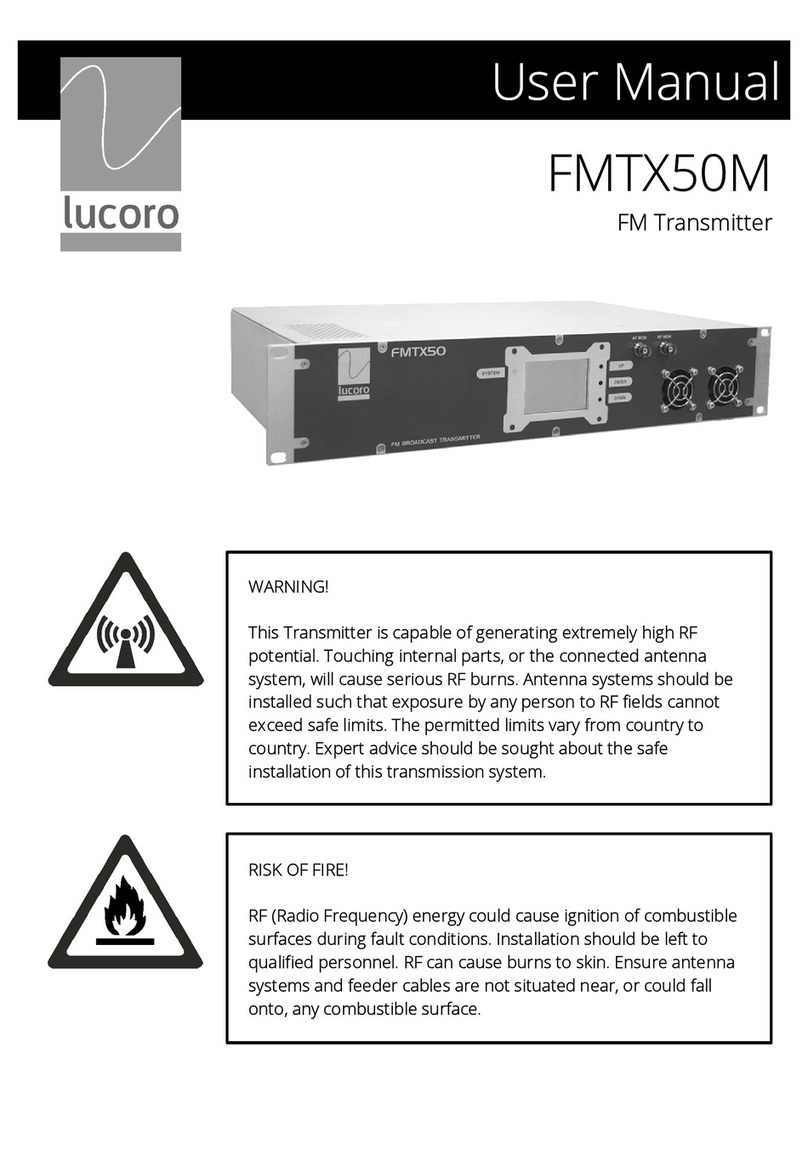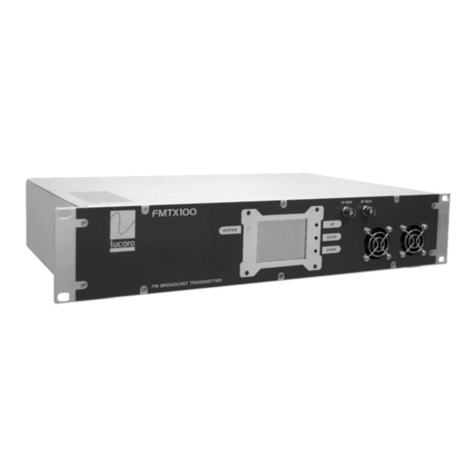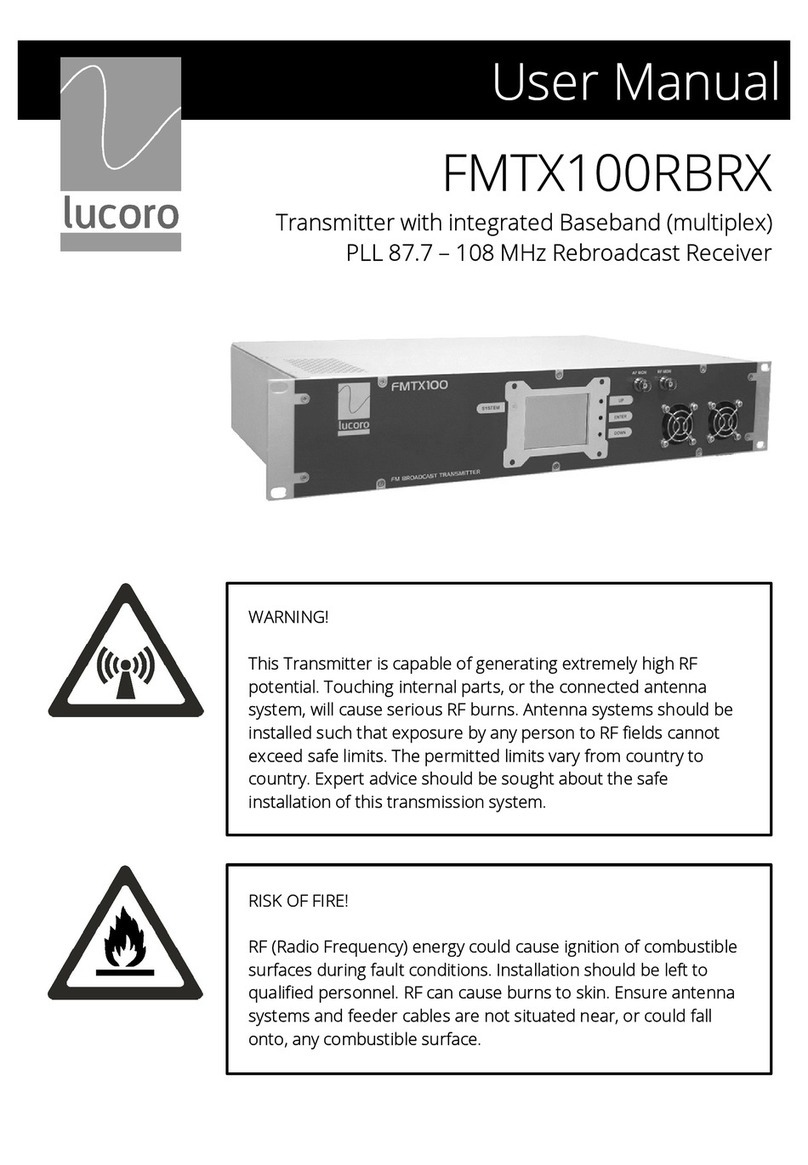
Using the front panel display and buttons, set the desired transmission
frequency:
Power down the unit, wait a few seconds and, whilst pressing
ENTER for 5 seconds, power up the unit. After a short while, the
currently set frequency will appear on the display. Use the UP
and DO N buttons to select the desired frequency. Press
ENTER to store. The new frequency will flash rapidly to indicate
that it is now stored. Power down the unit by cycling the power
off then on again, for the setting to take effect.
The FMTX100 can display deviation, in place of Left & Right audio input
levels, which can be useful if only the MPX input is used:
Power down the unit, wait a few seconds and, whilst pressing UP
for 5 seconds, power up the unit. The unit will always show the
deviation level, when powered-up, until the same sequence is
repeated to toggle the transmitter back to the mode where
audio levels are displayed.
An internal jumper setting is provided to save the need for using a loop
loop-through cable from the BNC MPX out to BNC MPX input on the
rear panel. This jumper will need to be changed to short Pins 1 & 2 on.
Either use a loop-through cable or return the jumper setting to short
Pins 2 & 3 in order to use the stereo audio inputs and internal RDS
facility.
The factory will have set the deviation, RDS and pilot injection levels.
They should need no further adjustment. However, if absolutely
necessary, these can be changed as follows (NOT recommended):
ELECTRIC SHOCK AND RF BURN HAZARD! DISCONNECT THE
PO ER BEFORE REMOVING ANY COVERS.
To adjust the deviation level, locate VR2 “DEV” on the internal
main circuit board and use a suitable tool carefully adjust the
multi-turn trimmer. This is the overall level input to the
modulator, so Pilot and RDS subcarrier levels, if present, will also
change.
To adjust the RDS injection level, locate VR3 “RDS” on the
internal main circuit board. Adjust the multi-turn trimmer to set
the desired RDS injection level.
